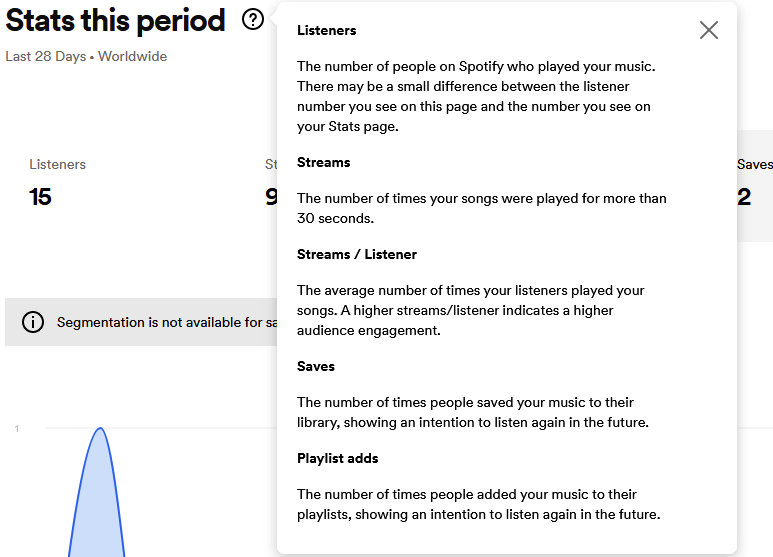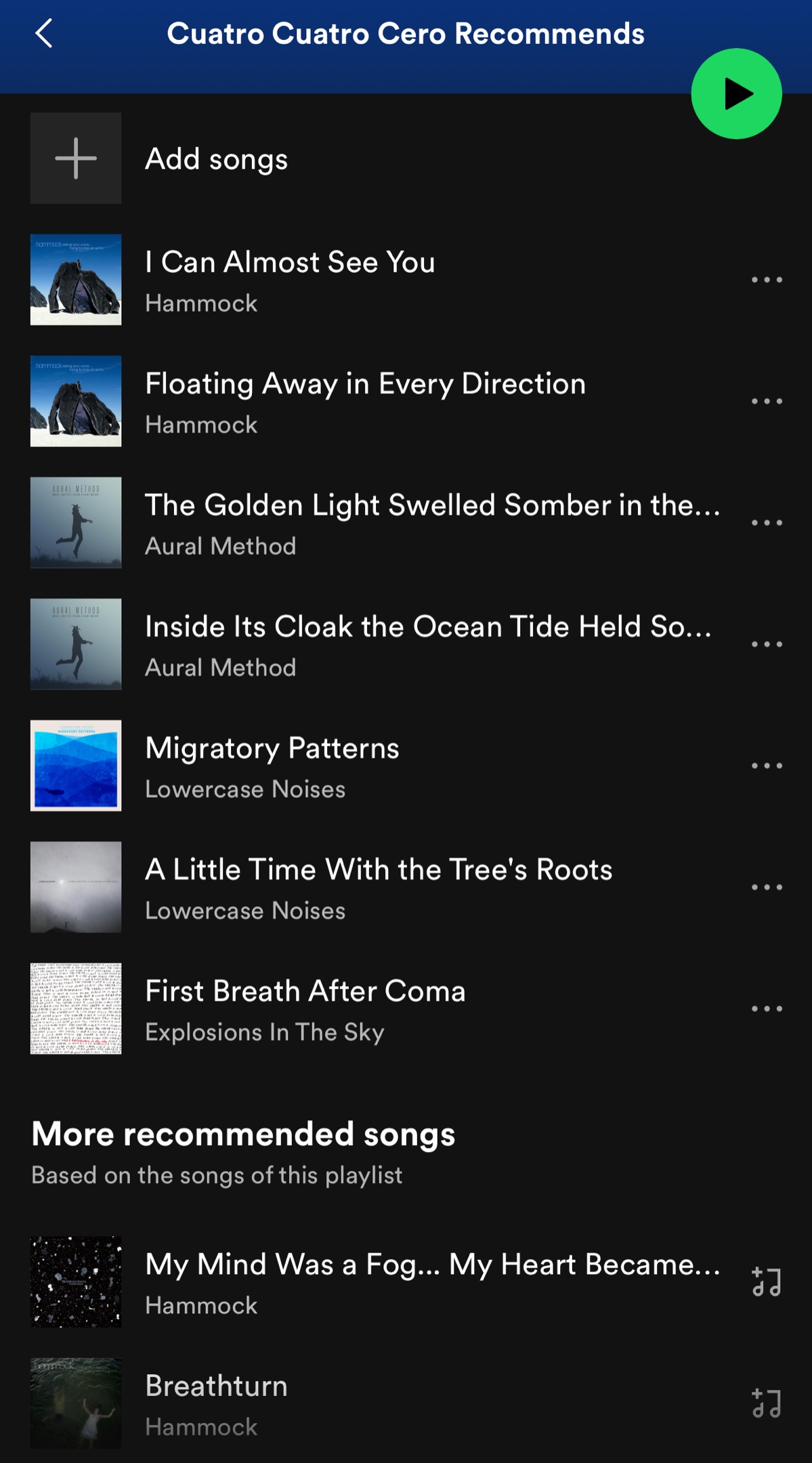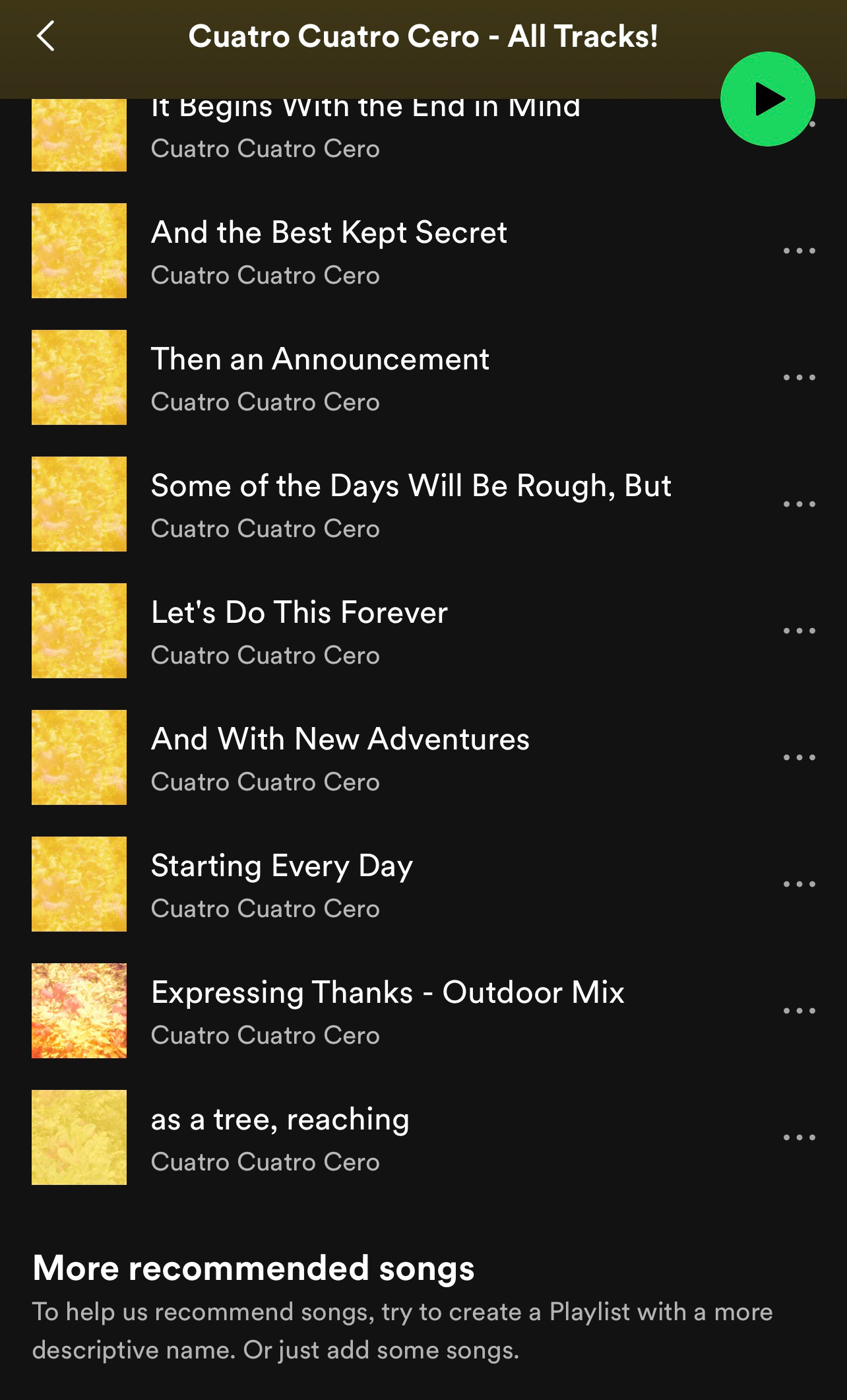How to boost music artists you enjoy
Note: The examples here are specific to Spotify, because that’s where I found the most obvious supporting material and public clues. I’ll happily update this as I find specific examples from other music services. Rest assured, every major music service is doing everything it can to keep you listening. And that means they are constantly trying to make correlations between tracks, artists, and end-users (“listeners”) meta-data.
TL;DR:
- “Like” tracks
- Use the “Follow” feature for the artist
- Use the “add to library” feature on albums/tracks
- Add their tracks to Playlists
- … with similar artists/tracks that would go well together
- … that have descriptive titles; genres, moods, vibes, seasons, activities, etc.
It’s similar to what every “YouTuber” is asking of you: “Like and Subscribe”! It really does go a long way.
This is kind of a brain dump. Thanks for your patience. =)
Some observations on key ways to help “boost” the artists you love
Spotify has a lot of support material for artists, about how to grow their audience. One page in particular has several revealing remarks: https://artists.spotify.com/help/article/types-of-spotify-playlists — I’m going to point out some specific parts of that page.
Music services utilize your “taste”, dynamically adding tracks even to the Editorial Playlists
In the section about Spotify Editorial Playlists, we find this quote:

That means that even editorial playlists rely on “their taste”, and music the “listener already likes”. So how do they determine that? “Algorithms that look at listener habits”.
- Liking tracks
- “Following” an artist
- Adding to library
- Adding to playlists
- with similar/other artists
- with a playlist title that has important or useful words in it
Playlists
Spotify makes it pretty clear: “… and what to recommend”.

Regarding personalized playlists, it’s in pretty plain language right below the header:

- What listeners “play, save, like, share, skip”
- Note: ‘skip’ is a generally negative action.
- Habits of other listeners that have similar “taste”
- “The more followers you have, the more… playlists you get on.”
- That quote is aimed at the artist. It’s right there in plain language. “Followers” is a huge indicator.
The Followers feedback loop
One quick aside about Followers.
Most of the major services have implemented artist “Follow” features. Usually that means notifications about new releases from those artists. As well, there’s usually a “new releases” Playlist of some kind generated for each listener.
When a listener opens a notification, clicks through the email link about a new release, plays that track on a “What’s New” Playlist , etc, it’s a form of positive engagement. That positive engagement is fed back into “the algorithms”, and further reinforces that you enjoy that artist/track. Spotify even supports “social recommendations”, pushing the music listeners enjoy out to their friends.
Key metrics from the Spotify for Artists dashboard
To emphasize these factors: Here’s a screenshot from a Spotify for Artists dashboard page, showing a handful of key metrics:

And this is how each of those items is described:

Notice a recurring phrase: “intention to listen again in the future”. Those actions are clearly very important to determining which artists or tracks a listener enjoys. And therefore, if they can find “similar artists/tracks”, they will make their way into other playlists and recommendations.
Clues in the listener user interface
Sometimes at the end of a playlist, you’ll see this phrase before the recommended tracks: “Based on the songs of this playlist”. Spotify is comparing that content, and seeing how it’s grouped together!

On a playlist consisting of only tracks from a new artist, I’ve seen this text: “To help us recommend songs, try to create a Playlist with a more descriptive name. Or just add some songs.”
Here’s a screenshot containing only the new artist, and lacking a great title:

Thoughts:
- “a more descriptive name” — Spotify would definitely have to be looking at the keywords in your playlist title. Then finding similarly named playlists, and seeing what artists/tracks are in those Playlists. Think “SEO”.
- “Just add some songs” — Here, I think Spotify is just hoping to recognize some tracks or artists that it already has recommendations/correlations. Clearly, this particular list doesn’t contain an artist or tracks that it has already associated with others.
In summary: scroll up and read the “TL;DR”. 😅 😄
I’m not a marketing professional, and I don’t work for or represent any of the music services mentioned. These were just some quick observations. I talk about this stuff occasionally, and thought this might be helpful.